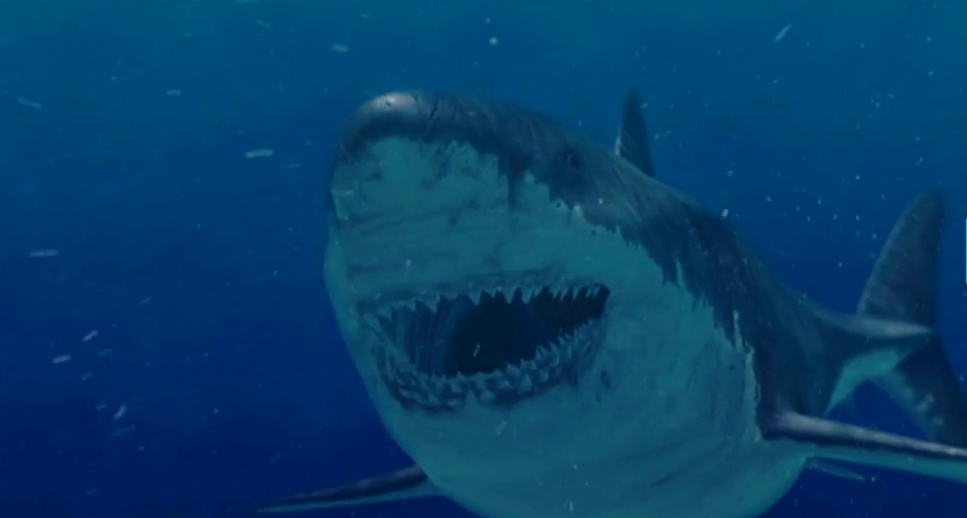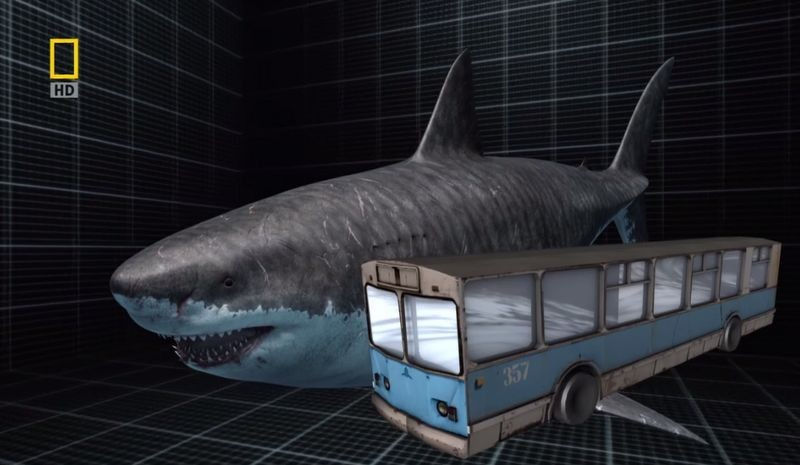
CREATURE-PEDIA
Megalodon




Megalodon (meaning “Big Tooth”), was not just the biggest prehistoric shark that ever lived, it was also the largest predatory marine creature in the history of the planet, vastly outweighing both the modern Great White Shark and ancient reptiles like Liopleurodon and Kronosaurus. On the following slides, you'll find 10 fascinating facts that you may or may not have known about this lethal predator. (Follow this link for information about the Discovery Channel show Megalodon: The New Evidence, and also learn why there are no giant sharks alive today). Since Megalodon is known from thousands of teeth but only a few scattered bones, its exact size has been a matter of debate. Its jaws alone were up to 7 feet high easily tall enough to swallow a person, weighing in at a whopping 100 tons, it was 100x heavier than an average great white shark and up to 60 feet long, it was the length of an articulated truck trailer. Megalodon had a diet befitting an apex predator, feasting on the prehistoric whales that swam the earth's oceans during the Pliocene and Miocene epochs, but also chowing down on dolphins, squids, fish, and even giant turtles. In 2008, a joint research team from Australia and the U.S. used computer simulations to calculate Megalodon's biting power. The results can only be described as terrifying: whereas a modern Great White Shark clamps its jaws shut with about 1.8 tons of force (and a lion with 600 pounds or so), Megalodon chomped down on its prey with a force of between 10.8 and 18.2 tons enough to crush the skull of a prehistoric whale as easily as a grape. Megalodon didn't earn its name ("giant tooth") for nothing. The teeth of this prehistoric shark were over half a foot long, serrated, and heart-shaped (by comparison, the biggest teeth of a Great White Shark are only about three inches long). You have to go back 65 million years--to none other than Tyrannosaurus Rex to find a creature that possessed consistently bigger choppers, though the canines of some saber-toothed cats also measured up. According to at least one simulation, Megalodon's hunting style differed from that of modern Great White Sharks. Whereas Great Whites dive straight toward their prey's soft tissue (say, a carelessly exposed underbelly or the legs of a wading swimmer), Megalodon's teeth were suited to biting through tough cartilage, and there's some evidence that this giant shark may have first sheared off its victim's fins (rendering it unable to swim away) before lunging in for the final kill. Technically, Megalodon is known as Carcharodon megalodon--meaning it's a species (Megalodon) of a larger shark genus (Carcharodon). Also technically, the modern Great White Shark is known as Carcharodon carcharias, meaning it belongs to the same genus as Megalodon. However, not all paleontologists agree with this classification, claiming that Megalodon and the Great White arrived at their striking similarities via the process of convergent evolution. Because sharks are constantly shedding their teeth--thousands and thousands over the course of a lifetime--and because Megalodon had a global distribution, Megalodon teeth have been discovered all over the world, from antiquity to modern times. It was only in the 17th century that a court physician named Nicholas Steno identified peasants' prized "tongue stones" as shark teeth, for this reason, some historians describe Steno as the world's first paleontologist! Unlike some sharks and marine reptiles of prehistoric times--which were restricted to the coastlines or inland rivers and lakes of certain continents--Megalodon enjoyed a truly global distribution, terrorizing whales in warm-water oceans all over the world. Apparently, the only thing keeping adult Megalodons from venturing too far toward solid land was their enormous size, which would have beached them as helplessly as 16th-century Spanish galleons. So Megalodon was huge, relentless, and the apex predator of the Pliocene and Miocene epochs. What went wrong? Well, this giant shark may have been doomed by global cooling (which culminated in the last Ice Age), or by the gradual disappearance of the giant whales that constituted the bulk of its diet. (By the way, some people believe Megalodons still lurk in the ocean's depths, as detailed in the Discovery Channel show Megalodon: The Monster Shark Lives, but there's absolutely no reputable evidence to support this).
Fun Fact
Megalodon was so big, it can hunt larger whales.
Did You Know?
When Megalodon was a baby, it was the size of an adult Great White Shark.

